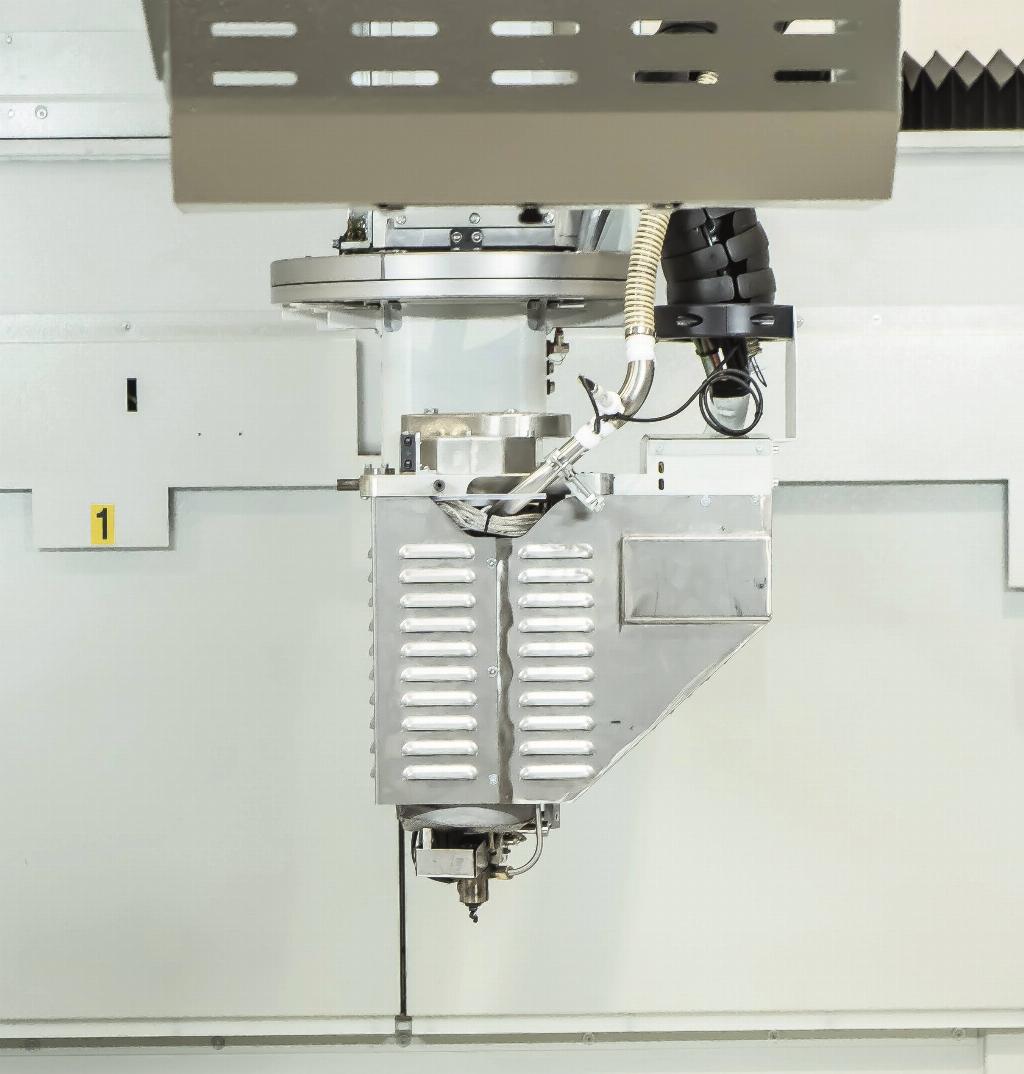The creation of the Kreator!

Maurizio Bernini, additive manufacturing and new technologies product manager of leading CNC machine tool specialists, CMS discusses the company’s partnership with Fraunhofer Institute on the creation of a new hybrid system for both additive manufacturing and milling.
Kreator is a new, ‘two-in-one’ system from CMS and the German Institute Fraunhofer IWU that combines the functions of a large-sized 3D printer and a machining centre for the high-speed production of composite parts from thermoplastics and their subsequent processing by milling.

Kreator is suitable for applications, such as the manufacture of high-precision prototypes and the production of tooling. Available in various configurations and sizes, Kreator and is capable of working with a wide range of materials based on plastics, including ABS, PA and high-tech polymers filled with carbon fibre or fiberglass – the proportion of the latter can be up to 40%. Kreator uses granulate rather than filament as a material for 3D printing, which means that materials will be more accessible and much cheaper than plastic in the form of a filament.
Q) Please provide some background to the creation of Kreator Ares?
We started thinking about a hybrid 3D printing + milling solution in 2017 and soon realised how useful this solution could be in the production of tooling for composites to reduce both manufacturing cycles and material costs.
From the earliest stages, our strategy has been to share our commitment to finding new technologies, such as large format additive manufacturing (LFAM) with customers, and making them challenge Kreator with real parts to be redesigned, 3D printed and then milled. All this, under the signature of a mutual non-disclosure agreement to protect both parties - and to be free in the exchange of information.
After the first use cases with customers interested in Kreator, we realised that customers regard Kreator as an extension of the functionality of standard FDM printers. As a result, the potential market appears to be clearly larger than the composites market.
Q) Briefly outline Kreator’s cycle time production process?
The additive manufacturing technology employed is known as Screw Extrusion Additive Manufacturing (SEAM). The materials used are thermoplastic pellets, reinforced by discontinuous carbon or glass fibre. The material is loaded manually and dried off in the machine. A feeding system - fully-integrated into the machine - brings the material to the extruder. The extrusion is done by a single screw extruder that melts the granules. The extruder is moved by the machine tool’s axes. The melted polymer exiting the extruder is deposited in layers that plasticise and form a single piece. The extruder’s screw is moved by the electrospindle of the machine itself. We have invented a sort of ‘automatic tool change’ to automatically release the mechanical tool, connect the extruder and vice-versa. This system is patent pending.

Q) Will it reduce the cycle times of difficult to machine, complex parts?
A good example is a customer case study. A high accuracy support made of an aluminium base and a couple of subparts - used as reference surfaces and manufactured by a standard FDM 3D printer - have been replaced by three parts 3D-printed by Kreator. The two subparts, manufactured with the usual method, required 26 hours of 3D printing whereas with Kreator, they took only two hours of 3D printing and three hours of milling.
Q) Will it help reduce the amount of material used?
In the context of Ureol epoxy or similar replacement, we have seen raw material costs savings higher than a factor of five due to the hollow nature of the 3D printed parts - compared to the solid nature of the same part manufactured with subtractive methods. However, our approach is ‘less material, more printing speed’ and we can confidently say that Kreator uses up to five times less raw material than competitors to print the same part.
Q) What aspects of Kreator will your customers be most satisfied with and what are your hopes for it going forward?
The automatic passage from a CNC machining centre to a large-sized 3D printer enables our customers to appreciate the flexibility of the entire system. However, Kreator also leverages an advantage from the latest version of CMS Ares, including all the features oriented to Industry 4.0. Thanks to Kreator Ares, we hope to not only increase the competitiveness of the composite industry as a whole, but increase the volumes of our overall business too.









